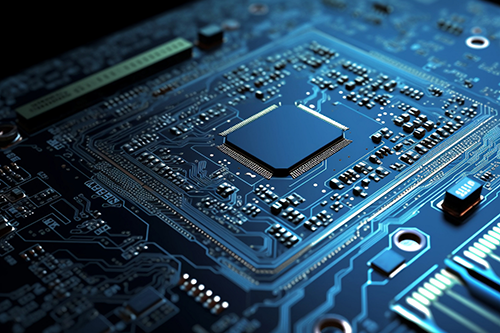Pablo Valerio2024-02-22 09:25:40EPS News

The tide has turned, and consumers are adopting a more sustainable approach, opting to repair and extend the lifespan of their electronic devices, especially smartphones, tablets, and smartwatches.
A growing number of manufacturers and brands are extending software support. Apple updates iPhones for about six years and Macs for six to eight years, depending on the model. For its new Pixel 8 phones, Google extended support to seven years. Now, the company provides updates to Chromebooks for up to a decade.
Furthermore, consumers are becoming more educated and cost-conscious about the lack of need to replace electronic devices, especially smartphones, continuously. In most cases, a three-year-old smartphone can continue to work adequately; it only needs a new battery.
The sticker shock of new electronic devices and the realization that older models could still perform adequately with a simple repair made it an attractive option.
A 2020 Consumer Technology Association survey showed that only 2 percent of consumers “report throwing their old mobile device in the trash, while more than ten times as many reported either trading in their old mobile device, selling it, giving it away, or recycling it.”
The global consumer electronics repair and maintenance market is expected to grow from $8.43 billion in 2022 to $9.64 billion in 2027 at a CAGR of 2.5 percent.
Recently, a new wave of regulations is forcing manufacturers to extend the lifespan of electronic consumer devices, continue providing software updates, facilitate the means for repair and replacement of critical components, and keep spare parts available for several years.
European Union Right-to-Repair legislation
Eight years ago, people from iFixit, the fix everything website, ran a workshop with European Parliament M.P.s to show them how to fix their phones and encourage legislation to help people keep using their devices longer.
In October 2023, the European Parliament voted in favor of a comprehensive right-to-repair directive requiring manufacturers to make repair manuals, spare parts, and diagnostic tools available to independent repairers and consumers. The directive would also ban proprietary software locks preventing consumers from repairing their devices.
The directive is expected to be formally adopted by the European Council in 2024 and will come into effect two years later. Once the directive is in force, it could save consumers €15 billion ($17 billion) per year and prevent 11 million tons of e-waste from being generated.
Right-to-Repair in the United States
In the U.S., there are currently several right-to-repair bills in the pipeline. One bill, the Right to Repair Act of 2023, was introduced in the House of Representatives in April 2023. The bill would require manufacturers of electronic devices to make repair manuals, spare parts, and diagnostic tools available to independent repairers and consumers.
Another bill, the Unlocking Technology Act of 2023, was introduced in the Senate in May 2023. The bill would ban proprietary software locks preventing consumers from repairing their devices.
On November 14, 2023, the Public Interest Research Group (PIRG) asked the federal government to regulate Right-to-Repair. Specifically, it petitioned the Federal Trade Commission (FTC) to initiate a rulemaking for new legislation.
Early this month, the
Early this month, the FTC announced the opening of a comment submission period. This is the crucial next step, and the popularity determines whether the FTC will respond to the petition with a draft rule.
An opportunity for distributors
For distributors, this shift presents a golden opportunity. With their vast networks, expertise in sourcing hard-to-find electronic components, and the ability to remanufacture obsolete components, these companies are positioned to cater to the flourishing repair market. OEMs and EMS providers do not want to tie capital up by holding obsolete inventory so most maintenance, repair and operations (MRO) inventory is held in the channel.
Catalog distributors sell small volumes of parts for product development and prototyping, but customers can also find replacements for parts that aren’t working correctly.
EOL distributors, such as Flip Electronics and Rochester Electronics remanufacture components that have gone end-of-life (EOL). These companies carry finished goods, the tools and die for component production, and are authorized by original component manufacturers (OCM).
Independent and authorized distributors will often buy and carry EOL devices for resale, especially components common to multiple customers.
Repair is critical for the environment
When a device gets repaired, it continues using the resources already invested in its production, helping conserve finite resources, such as rare earth metals and precious metals, which are essential for producing electronic devices.
The growing awareness of e-waste and its detrimental impact on the planet pushed consumers to make conscious choices. Repairing devices instead of discarding them becomes a badge of honor, a way to reduce one’s environmental footprint.
“Long-lasting, repairable products are essential for the future of the planet. Sustainable electronics stand the test of time, and parts pairing undermines the ecosystem needed to keep these devices alive,” says iFixit founder and CEO Kyle Wiens. “Right-to-repair is gaining momentum. We’re not giving up the fight for independent repair—and neither should you.”
Overall, the environmental benefits of the right-to-repair movement are substantial and far-reaching. By extending the lifespan of devices, conserving resources, and minimizing the environmental effects of manufacturing and disposal, these new consciousness and regulations can help create a more sustainable future for electronics.
Declare:The sources of contents are from Internet,Please『 Contact Us 』 immediately if any infringement caused